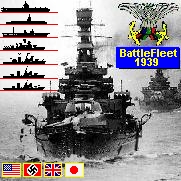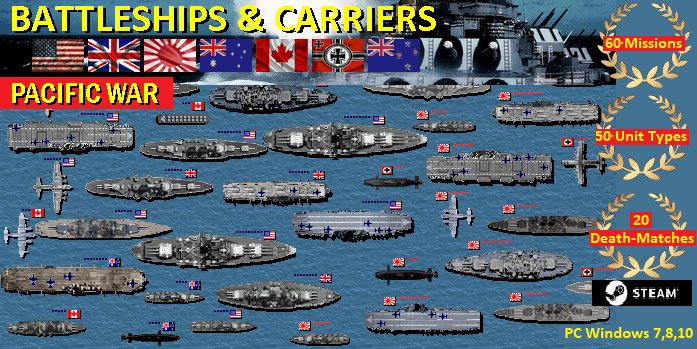USAF Plane
List
USN
FIGHTERS
F-5 Freedom
Fighter
F-20
Tigershark
F-4 Phantom
II
F-86 Sabre,
A-4 Skyhawk,
A-6 Grumann
Intruder
F-14 Tomcat
F-15 Eagle
F15,
F-16
Fighting Falcon
F-18 Hornet
F-22 Raptor
F-35 Joint
Strike Fighter
U-2 Dragon
Lady
SR-71
Blackbird
F-22 Raptor,
F-35 Joint
Strike Fighter JSF
B-52
Stratofortress B52
F-111
B-1 Lancer
B-2 Spirit
P-3C Orion
S-3B Viking
CH-46 Sea
Knight,
CH-53 Sea
Stallion
H-3 Sea
King
MH-53 Sea
Dragon
SH-60
Seahawk
HH/UH-1N
Iroquois
AH-1 Cobra
UH-60 Black
Hawk,
HH-60 Pave
Hawk Helicopter
AH-64
Apache AH64
RQ-1
Predator
Battleship Game - WW2 Naval
Strategy: the best choice among aircraft carrier games and submarine and battleship games.
Missions and Scenarios:
Pearl Harbor Game
Atlantic Game 1943
Sink Cruisers Game
Midway Game
Iwo Jima Game
US Marines Game
Luftwaffe Game Pacific
Torpedo Game Boats
Bismarck Game Pacific
Destroy RAF Game
Okinawa
Us Navy Submarine Game
Fleet Submarines Game
Kamikaze Game
U Boat Game
Singapore Game
Swordfish Hunt
Patrol Boats
Air Supremacy
Alert
Battleships Game
Java
Defense
Fleet Cruisers Game
Atlantic Island
Coral Sea Game
Iron Sea
Mykonos
Imperial Ocean
Long Convoy
Skagerrak
Target Los Angeles
West Pacific Game
Pacific War Game
Leyte Transport
Emperor Hirohito
Normandy Game
South Pacific Game
Destroy USAF Game
Submarine Games
US Navy Game
Free Hunt Doenitz Game
Free Hunt Spruance Game
Free Hunt Halsey Game
Imperial Navy I
Royal Navy Game
Free Hunt Pearl Harbor Games
Midway II
Kriegsmarine I
Brisbane Convoy
Clear West Coast
Fall Of Australia
Battle For Leyte
Conquer Of Japan
HMAS Perth
Road To Okinawa
Orange Ports
Emperor Defense
Prince Of Wales
San Bernardino
Pacific Race
Heavy Duty
Tokio Express
Operation Sidney
Bomber Operation
Conquer Of Italy
Heavy Cruiser Game
Frigate Hunt
Santa Cruz
Lamansh Game
Azores Transport
Norway Convoy
Invasion
Grossadmiral
Norway Ports
Drang Nach Ost
Convoy Pk30
Ciano Defense
Sir John Tovey
Free Hunt Andrews
Germans On Pacific
Silent Hunt
Antigua
Return To Midway
Kriegsmarine Game II
Royal Air Force Game
F. Hunt Lancaster
Jamamoto Game
Free Hunt USN
Free Hunt Japan
Free Hunt RAAF
Free Hunt U Boat Game
Free Hunt Aircraft Carriers Game
Free Hunt Hawaii
Free Hunt Yamato Game
Free Hunt Iwo Jima Game
Free Hunt Pacific Game
Free Hunt Torpedos
Free Hunt Convoy
Free Hunt Germany
Free Hunt Germany II
Free Hunt Italy
Free Hunt Malaya
Free Hunt Subs Game
Free Hunt B-29 Game
Free Hunt USN 1944
Devil Island
Dragoon Carriers
|
A-10
Thunderbolt II
The A-10 / OA-10 Thunderbolt II,
often known as the "Warthog," is the first US
Air Force aircraft specially designed for close air
support of ground forces. They are simple, effective and
survivable twin-engine jet aircraft that can be used
against all ground targets, including tanks and other
armored vehicles.
The A-10 / OA-10 have excellent maneuverability at low
air speeds and altitude, and are highly accurate
weapons-delivery platforms. They can loiter near battle
areas for extended periods of time and operate under
1,000-foot ceilings (303.3 meters) with 1.5-mile (2.4
kilometers) visibility. Their wide combat radius and
short takeoff and landing capability permit operations in
and out of locations near front lines. Using night vision
goggles, A-10/OA-10 pilots can conduct their missions
during darkness.
Thunderbolt IIs have Night Vision Imaging Systems (NVIS),
goggle compatible single-seat cockpits forward of their
wings and a large bubble canopy which provides pilots
all-around vision. The pilots are protected by 900 pounds
of titanium armor (referred to as a "titanium
bathtub") that also protects parts of the
flight-control system. The redundant primary structural
sections allow the aircraft to enjoy better survivability
during close air support than did previous aircraft.
The aircraft can survive direct
hits from armor-piercing and high explosive projectiles
up to 23mm. Their self-sealing fuel cells are protected
by internal and external foam and are designed not to
explode if shot. Manual systems back up their redundant
hydraulic flight-control systems. This permits pilots to
fly and land when hydraulic power or a wing is lost.
The Thunderbolt II can be serviced and operated from
bases with limited facilities near battle areas. Many of
the aircraft's parts are interchangeable left and right,
including the engines, main landing gear and vertical
stabilizers.
Avionics equipment includes communications, inertial
navigation systems, fire control and weapons delivery
systems, target penetration aids and night vision
goggles. Their weapons delivery systems include heads-up
displays that indicate airspeed, altitude, dive angle,
navigation information and weapons aiming references; a
low altitude safety and targeting enhancement system
(LASTE) which provides constantly computing impact point
freefall ordnance delivery; and Pave Penny laser-tracking
pods under the fuselage. The aircraft also have armament
control panels, and infrared and electronic
countermeasures to handle surface-to-air missile threats.
Installation of the Global Positioning System is
currently underway for all aircraft.
The Thunderbolt II's 30mm GAU-8/A Gatling gun can fire
3,900 rounds a minute and can defeat an array of ground
targets to include tanks. Some of their other equipment
includes an inertial navigation system, electronic
countermeasures, target penetration aids, self-protection
systems, and AGM-65 Maverick and AIM-9 Sidewinder
missiles.
The first production A-10A was delivered to Davis-Monthan
Air Force Base, Arizona, in October 1975. It was designed
specially for the close air support mission and had the
ability to combine large military loads, long loiter and
wide combat radius, which proved to be vital assets to
the United States and its allies during Operation Desert
Storm and Operation Noble Anvil. In the Gulf War, A-10s
had a mission capable rate of 95.7 percent, flew 8,100
sorties and launched 90 percent of the AGM-65 Maverick
missiles.
The A-10s were an unwelcome addition to the Air Force
arsenal. Air Force officials prized the high-flying,
high-performance F-15 and F-16 jets, and
were determined to leave the dirty work of close air
support to Army helicopters.
In the 1980s, military planners intended the A-10s to fly
low, slow missions to counter divisions of Soviet tanks
stationed in eastern Europe.
In 1991, the planes proved their mettle in the Persian
Gulf War, destroying more than 1,000 tanks, 2,000
military vehicles and 1,200 artillery pieces. Five A-10s
were shot down during the war, far fewer than military
planners expected.
The aircraft again saw service in the 1999 Kosovo War,
but due to the rules of engagement imposed by the Clinton
administration, which was paranoid about having an
American aicraft shot down and thus possibly taking
casualties, the aircraft did not perform well. During the
2001 invasion of Afghanistan A-10's did not take part in
the initial stages. However, they were later based at
Bagram air base and took part in subsequent operations,
including Operation Anaconda in March 2002. Due to far
less restrictive rules of engagement, the aicraft
performed a great deal better than in 1999. Early in
2003, the aircraft saw service over Iraq again when
America and Britain invaded the country and deposed
Saddam Hussein. 60 A-10's were deployed, and one was shot
down near Baghdad International Airport by Iraqi fire
late in the campaign.
The A-10 is scheduled to stay in service with the USAF
until 2028, when it will be replaced by the Joint Strike
Fighter.
A10 General Characteristics
- Primary Function: A-10 --
close air support, OA-10 - airborne forward air
control
Contractor: Fairchild Republic Corporation
Power Plant: Two General Electric TF34-GE-100
turbofans Thrust: 9,065 pounds each engine
- Length: 53 feet, 4 inches
(16.16 meters)
- Height: 14 feet, 8 inches
(4.42 meters)
- Wingspan: 57 feet, 6 inches
(17.42 meters)
- Speed: 420 miles per hour
(Mach 0.56) (but is able to fly at a relatively
slow speed of 200 mph, which gives it an
advantage in battlefields)
- Ceiling: 45,000 feet (13,636
meters)
- Maximum Takeoff Weight: 51,000
pounds (22,950 kilograms)
- Range: 800 miles (695 nautical
miles)
- Armament: One 30 mm GAU-8/A
seven-barrel Gatling gun; up to 16,000 pounds
(7,200 kilograms) of mixed ordnance on eight
under-wing and three under-fuselage pylon
stations, including 500 pounds (225 kilograms) of
Mk-82 and 2,000 pounds (900 kilograms) of Mk-84
series low/high drag bombs, incendiary cluster
bombs, combined effects munitions, mine
dispensing munitions, AGM-65 Maverick missiles
and laser-guided/electro-optically guided bombs;
infrared countermeasure flares; electronic
countermeasure chaff; jammer pods; 2.75-inch
(6.99 centimeters) rockets; illumination flares
and AIM-9 Sidewinder missiles.
- Crew: One
- Date Deployed: March 1976
- Unit Cost: US$9.8 million
- Inventory: Active force, A-10,
143 and OA-10, 70; Reserve, A-10, 46 and OA-10,
6; ANG, A-10, 84 and OA-10, 18
| CIA / KGB Operation
Game.
Run your own intelligence game. Travel around the
world and set up espionage game, trade with state
secrets, weapon systems, spy codes, WMD, hire
secretaries, agents, lawyers and soldiers,
establish secret agent stations, cells and bases
and search for criminals and politicians. Involve
in agent game. Game contains more than 40
missions including Nuclear Game, Cold War Game,
Secret Agent, CIA Games, USAF, Prime Minister,
RAF, Bin Laden, Sadam, KGB, Operations Iran… |
|
A10 Variants
YA-10A
Pre-production variant. 12 were built.
A-10A
Single-seat close air support, ground-attack
version.
OA-10A
A-10As used for airborne forward air control.
YA-10B Night/Adverse Weather
Two-seat experimental prototype, for work at
night and in bad weather. The one YA-10B prototype was
converted from an A-10A.
A-10C
A-10As updated under the incremental Precision
Engagement (PE) program.
A-10PCAS
Proposed unmanned version developed by Raytheon
and Aurora Flight Sciences as part of DARPA's Persistent
Close Air Support program.[123] The PCAS program
eventually dropped the idea of using an optionally manned
A-10.
Civilian A-10
Proposed by the South Dakota School of Mines and
Technology to replace its North American T-28 Trojan
thunderstorm penetration aircraft. The A-10 would have
its military engines, avionics, and oxygen system
replaced by civilian versions. The engines and airframe
would receive protection from hail, and the GAU-8 Avenger
would be replaced with ballast or scientific instruments
A10 Mission
The A-10 Thunderbolt II has excellent maneuverability at
low air speeds and altitude, and is a highly accurate and
survivable weapons-delivery platform. The aircraft can
loiter near battle areas for extended periods of time and
operate in low ceiling and visibility conditions. The
wide combat radius and short takeoff and landing
capability permit operations in and out of locations near
front lines. Using night vision goggles, A-10 pilots can
conduct their missions during darkness.
Thunderbolt IIs have Night Vision Imaging Systems, or
NVIS, goggle compatible single-seat cockpits forward of
their wings and a large bubble canopy which provides
pilots all-around vision. The pilots are protected by
titanium armor that also protects parts of the
flight-control system. The redundant primary structural
sections allow the aircraft to enjoy better survivability
during close air support than did previous aircraft. The
aircraft can survive direct hits from armor-piercing and
high explosive projectiles up to 23mm. Their self-sealing
fuel cells are protected by internal and external foam.
Manual systems back up their redundant hydraulic
flight-control systems. This permits pilots to fly and
land when hydraulic power is lost.
The A-10 has received many upgrades over the years. In
1978, the aircraft received the Pave Penny laser receiver
pod, which sensed reflected laser radiation from a laser
designator. Pave Penney has now been discontinued in
favor more capable advanced targeting pods. The A-10
began receiving an inertial navigation system in 1980.
Later, the Low-Altitude Safety and Targeting Enhancement
(LASTE) upgrade provided computerized weapon-aiming
equipment, an autopilot, and a ground-collision warning
system. In 1999, aircraft began to receive Global
Positioning System navigation systems and a new
multi-function display. In 2005, the entire A-10 fleet
began receiving the Precision Engagement upgrades that
include an improved fire control system (FCS), electronic
countermeasures (ECM), upgraded cockpit displays, the
ability to deliver smart bombs, moving map display, hands
on throttle and stick, digital stores management,
LITENING and Sniper advanced targeting pod integration,
situational awareness data link or SADL, variable message
format, or VMF, GPS-guided weapons, and upgraded DC
power. The entire A-10 fleet has been Precision
Engagement modified and now carries the A-10C
designation.
The Thunderbolt II can be serviced and operated from
austere bases with limited facilities near battle areas.
Many of the aircraft's parts are interchangeable left and
right, including the engines, main landing gear and
vertical stabilizers. Avionics equipment includes
multi-band communications; Global Positioning System and
inertial navigations systems; infrared and electronic
countermeasures against air-to-air and air-to-surface
threats. And, it has a heads-up display to display flight
and weapons delivery information.
The Thunderbolt II can employ a wide variety of
conventional munitions, including general purpose bombs,
cluster bomb units, laser guided bombs, joint direct
attack munitions or JDAM, wind corrected munitions
dispenser or WCMD, AGM-65 Maverick and AIM-9 Sidewinder
missiles, rockets, illumination flares, and the GAU-8/A
30mm cannon, capable of firing 3,900 rounds per minute to
defeat a wide variety of targets including tanks.
A10 Background
The first production A-10A was
delivered to Davis-Monthan Air Force Base, Ariz., in
October 1975. The upgraded A-10C reached initial
operation capability in September 2007. Specifically
designed for close air support, its combination of large
and varied ordnance load, long loiter time, accurate
weapons delivery, austere field capability, and
survivability has proven invaluable to the United States
and its allies. The aircraft has participated in
operations Desert Storm, Southern Watch, Provide Comfort,
Desert Fox, Noble Anvil, Deny Flight, Deliberate Guard,
Allied Force, Enduring Freedom and Iraqi Freedom.
|
A-10 Aircraft operators:
USAF United States Air
Force
25th Fighter Squadron
66th Weapons Squadron
74th Fighter Squadron
75th Fighter Squadron
354th Fighter Squadron
357th Fighter Squadron
358th Fighter Squadron
422d Test and Evaluation Squadron
(Nellis Air Force Base, Nevada)
Air National Guard
104th Fighter Squadron
107th Fighter Squadron
163d Fighter Squadron
190th Fighter Squadron
Air Force Reserve Command
45th Fighter Squadron
47th Fighter Squadron
76th Fighter Squadron
303d Fighter Squadron
Former operators
United States Air Force
18th Tactical Fighter Squadron
78th Tactical Fighter Squadron
81st Fighter Squadron
91st Tactical Fighter Squadron
92d Tactical Fighter Squadron
343rd Tactical Fighter Squadron
353rd Tactical Fighter Squadron
355th Tactical Fighter Squadron
356th Tactical Fighter Squadron
509th Tactical Fighter Squadron
510th Tactical Fighter Squadron
511th Tactical Fighter Squadron
Air Force Reserve Command
47th Fighter Squadron
706th Fighter Squadron
Air National Guard
103d Fighter Squadron
118th Fighter Squadron
131st Fighter Squadron
138th Fighter Squadron
172d Fighter Squadron
176th Tactical Fighter Squadron
184th Fighter Squadron
| |
 |
 |
| Turn-based WW2
naval game, extension to the classic
Submarine game (Battleship game) where
ships/planes/subs can move. Contains plenty of
game missions, game campaigns and 40 ship,
submarine, airplane ana port artillery types,
with combat maps up to 96X96 large. |
| |
| |
| |
 |
| Tycoon Strategy
Game - build your own world business empire as an
arms dealer tycoon. Travel around the world,
trade with more than 400 weapon systems, hire
secretaries, bodyguards, lawyers, fighters and
tanks, establish companies and search for
criminals and hostages. |
| |
|
